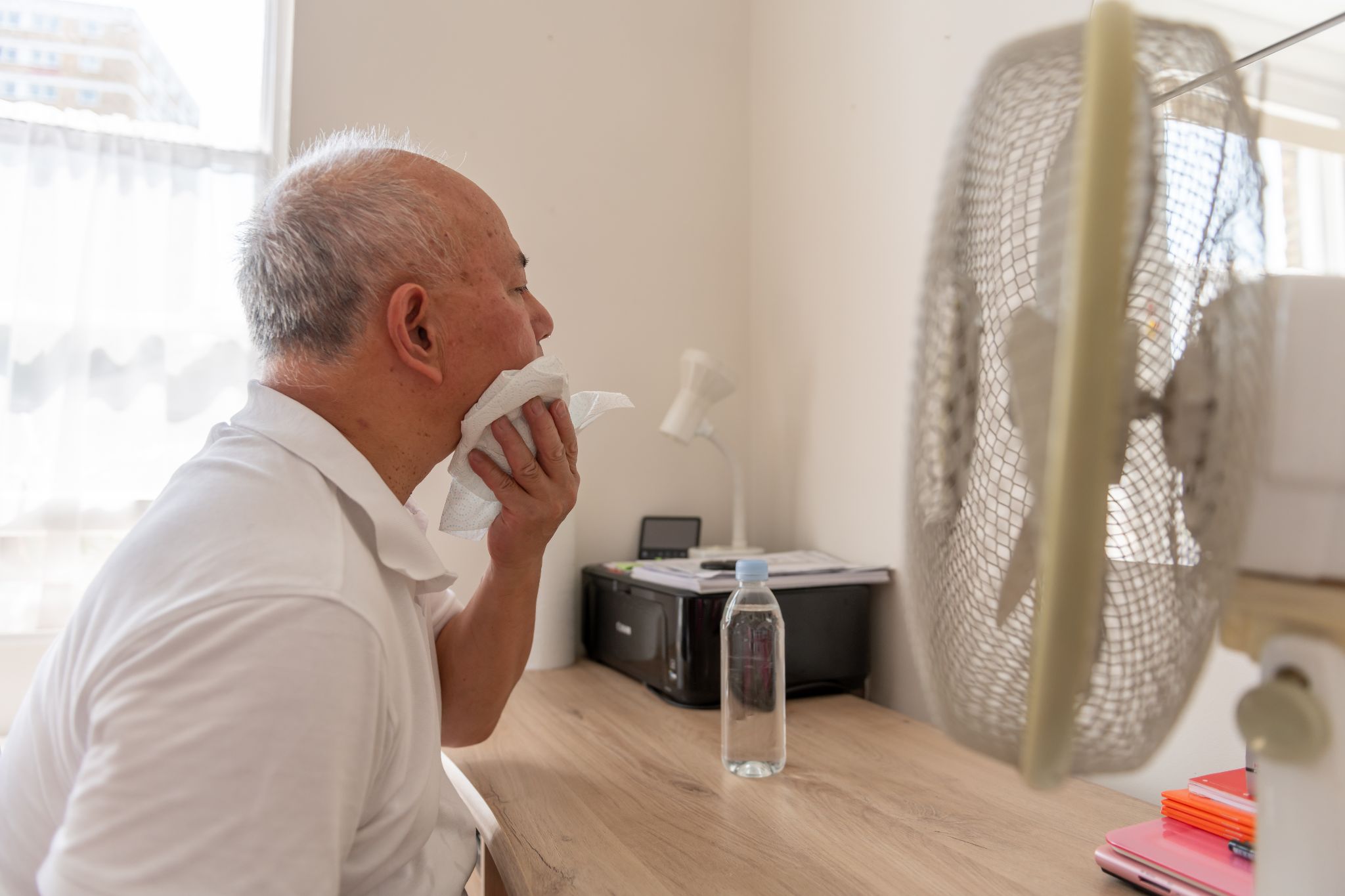How Perspiration Works and Why It’s Important to Know About Heat Stroke?

Our bodies rely on a complex cooling system to keep us comfortable as the temperature outside rises and heat waves become more common in the summer.
Sweating is an important function that keeps the body from overheating and protects against heat stroke and other heat-related disorders.
This piece will discuss perspiration, the body’s natural cooling mechanisms, and the risks of heat stroke when these systems are overwhelmed.
How Sweat Plays a Part in Temperature Regulation?
When the body gets too hot, it sweats to cool itself off. The hypothalamus in the brain transmits instructions to activate the sweat glands when our core body temperature rises owing to environmental variables like high ambient temperatures or physical exercise.
Sweat, predominantly water, salt, and trace amounts of other minerals, is produced by glands that are dispersed across the entire skin’s surface.
When perspiration evaporates, it removes heat from the body. Humans are able to keep their internal body temperature at roughly 98.6 degrees Fahrenheit (37 degrees Celsius) thanks to an exceptionally efficient evaporative cooling process.
Factors Affecting the Efficiency of Sweat
Since sweating is an effective cooling mechanism, several factors can influence its efficiency:
Humidity: The increase in humidity levels hinder the evaporation of sweat, reducing its cooling effect. When it’s humid, the area is full of moisture, making it harder for sweat to evaporate and cool you down.
Hydration: Adequate fluid intake is essential for maintaining proper sweating function. Dehydration can lead to a decrease in sweat production, impairing the body’s ability to cool itself.
Clothing: The clothing worn can also impact the effectiveness of sweating. Loose, lightweight, and breathable fabrics allow sweat to evaporate more easily, while tight, heavy, or non-breathable clothing can trap heat and hinder the cooling process.
Fitness level: Individuals with higher fitness levels tend to sweat more efficiently than those who are less fit. Regular exercise can help the body’s ability to regulate temperature and increase the effectiveness of the sweating process.
The Risk of Heat Stroke
Overloading the body’s cooling processes can lead to heat-related disorders including heat stroke. It can be brought on by either prolonged exposure to high temperatures or strenuous exertion in hot weather.
Seizures, brain damage, and even death can result from heat stroke. Preventing these issues and having a positive outcome requires timely recognition of the signs and management. Heat stroke symptoms often include:
Elevated core temperature
Strong and swift heartbeat
Severe headache
Unsteadiness and faintness
Nausea and diarrhea
Fluency issues, anxiousness, or confusion
Skin that’s hot, red, dry, or wet
Seizures
Unconsciousness
Preventing Heat Stroke by Optimizing the Cooling Process
Optimizing the body’s cooling systems and preserving a steady internal temperature are crucial to reducing the risk of heat stroke. Here are some tips to help you stay cool and avoid becoming sick from the heat:
Dress Appropriately: To promote perspiration evaporation and keep your body cool, dress in loose, airy, and breathable clothing.
Take Breaks: If you’re exercising outside during a hot day, stop frequently to rest and cool off in the shade or in a cool environment.
Avoid Peak Heat Hours: Plan your outside activities for the morning or evening, when it may be cooler than during the midday.
Use Cooling Techniques: Use cooling strategies to assist lower your body temperature, such as applying cold packs, taking cold showers, or utilizing fans.
Be Heat Ready
Sweat’s intricate workings and the body’s cooling systems serve as a testament to our incredible adaptability in controlling our internal temperature.
We may make wise decisions to maximize our body’s cooling ability and reduce the danger of heat-related disorders like heat stroke by developing a greater awareness of the sweating process and the elements affecting its effectiveness. It is crucial to prioritize our well-being by remaining cool, hydrated, and safe throughout the searing summer months as we experience warmer climes and more heatwaves.



